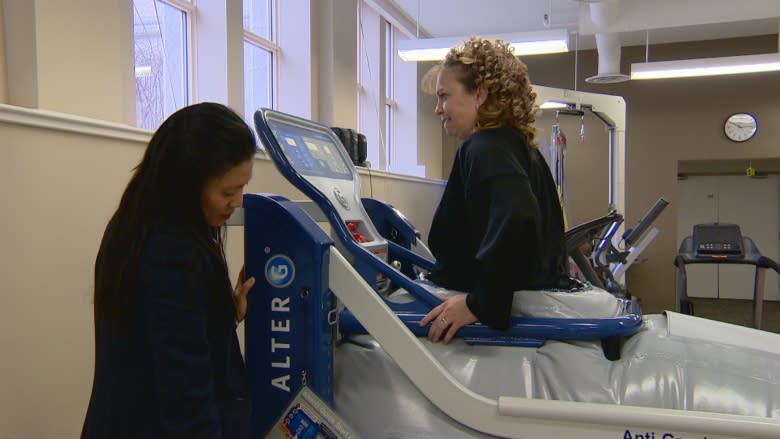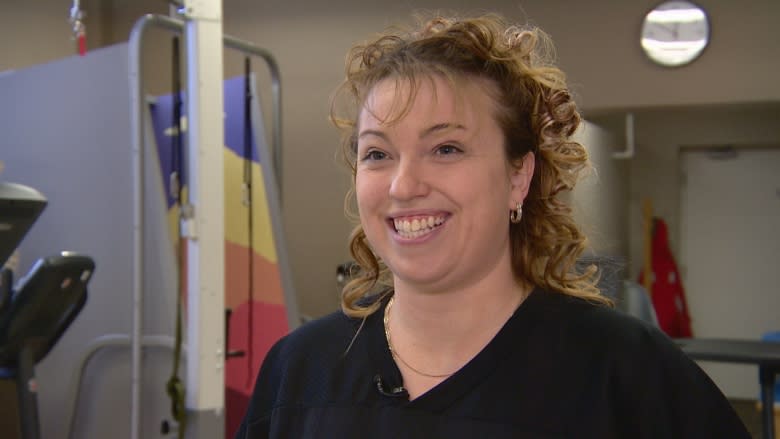Anti-gravity treadmill has physio patients 'walking on air'
When April McDonald takes to the treadmill at the University of Alberta's physiotherapy clinic, she feels like she's walking on air.
"It's the closest thing to walking on the moon that I'm ever going to get," McDonald said, while demonstrating an anti-gravity treadmill, known as the AlterG, at the University of Alberta.
McDonald, 34, had both of her arthritic hips replaced in August 2016.
"It allows me to walk without my waddle," she said, "and it allows my muscles to get stronger because they don't have to worry about my weight."
Unveiled at a news conference Wednesday, the AlterG looks like a regular treadmill swathed in a vacuum-sealed plastic membrane.
To use it, McDonald has to put on a pair of neoprene shorts and zipper herself into the machine. The membrane is then pumped full of air and pressurized.
New age treadmill latest technology
The AlterG, one of only two in Edmonton, lifts five to 80 per cent of bodyweight and allows patients to walk, or run as fast as 15 km/h.
It was added to the physiotherapy clinic in late December.
In the past, treatment for patients like McDonald involved strapping them into a harness-and-pulley system, said clinic co-ordinator Kim Dao, a U of A professor in physical therapy and rehabilitation.
"This lifts the patients bodyweight from inside the treadmill," she said. "It makes it easier for them to go from walking to running."
The treadmill lessens the pain a patient like McDonald might experience while exercising, said Dao.
"Studies have shown that even long term, after any type of injury, the muscles are more likely to be injured again if they're not properly taken care of. So, the more strengthening she does on a life-long basis the better off she's going to be long term."
McDonald is part of The Young Hip Program at the U of A Faculty of Rehabilitation Medicine.
The AlterG treadmill makes the one-hour drive from McDonald's home near Stony Plain for twice-a-week appointments well worth it, she said.
It helps her recovery and makes it fun to exercise.
"You can tippy-toe, you can feel like the roadrunner where you can run your legs in place and not touch," said McDonald. "It is very cool."



